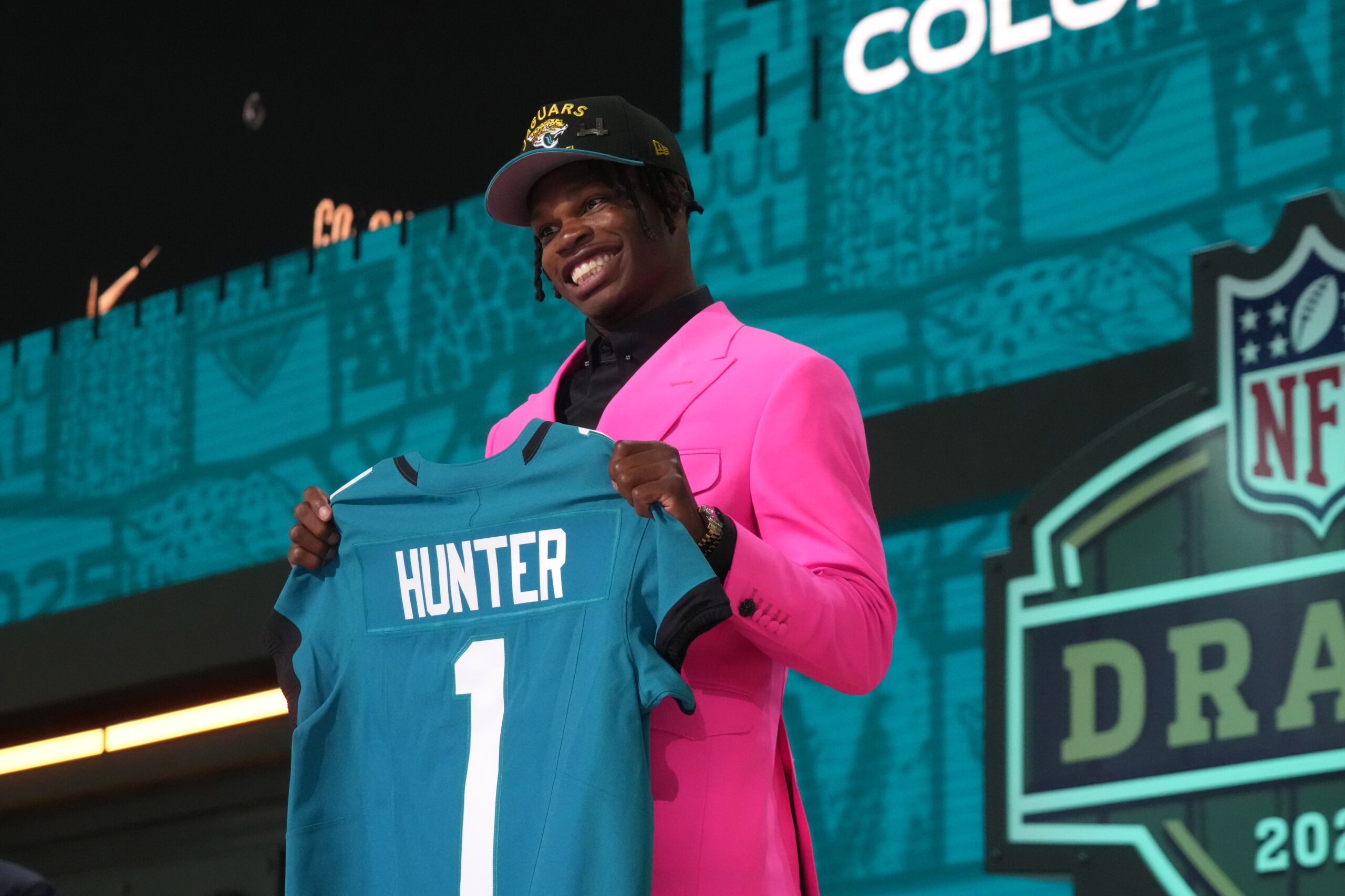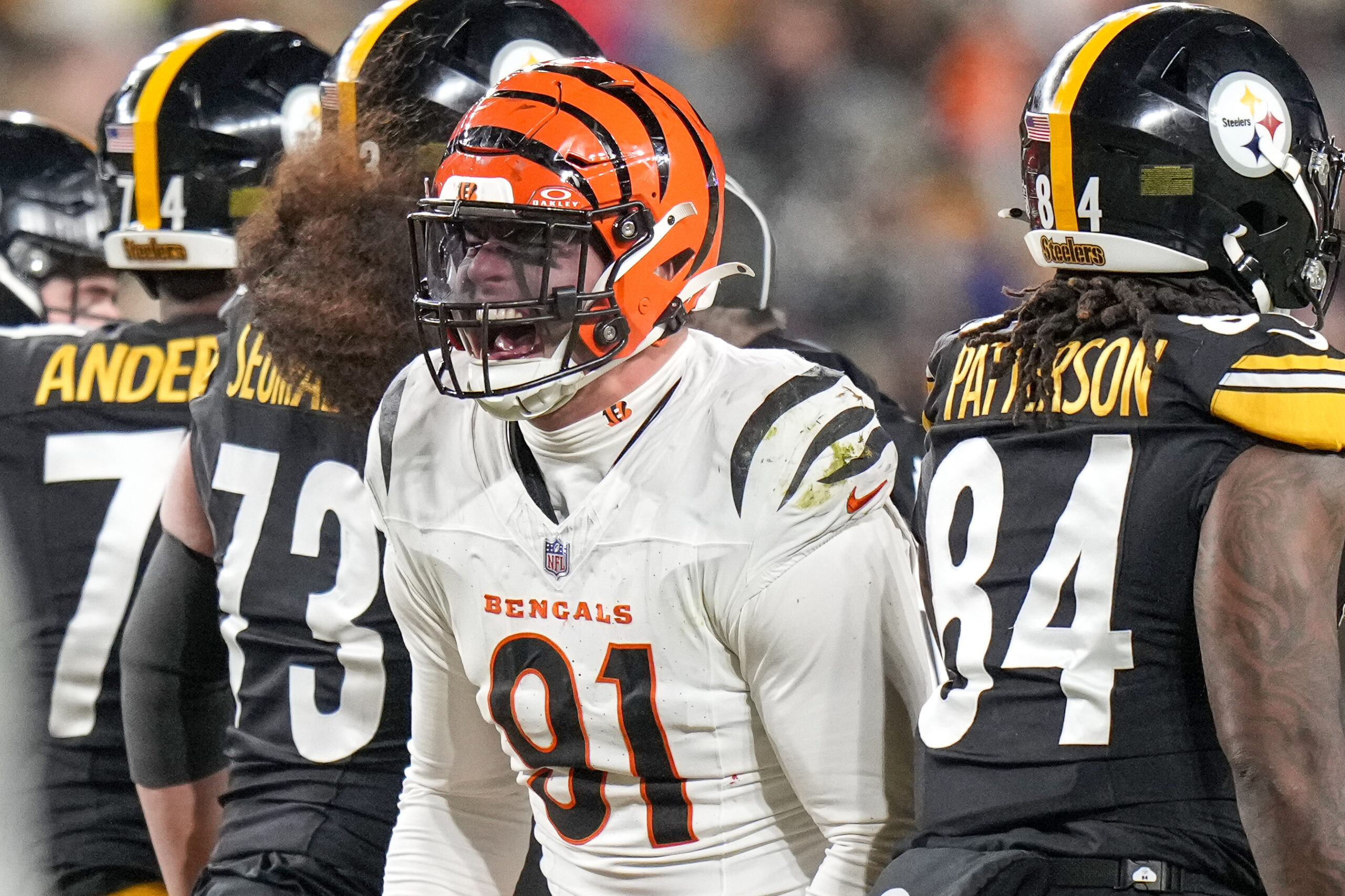Expert Analysis
11/14/24
7 min read
How The Chargers Became One Of The NFL's Best Defenses In 2024

At 6-3, the Los Angeles Chargers are one of the NFL’s surprise teams in 2024. The Chargers sit as the sixth seed in the AFC and 70 percent of the way to their preseason win total after just 10 weeks of the season.
Jim Harbaugh installs a winning culture wherever he goes, and that’s unlocked something in Justin Herbert, who is playing some of his best football in the past few weeks. That includes the Week 10 game in which Herbert scrambled at a career-high rate of 21.7 percent.
While the offense has flashed, the defense has been critical to the impressive start to the Harbaugh era. Defensive coordinator Jesse Minter, the defensive coordinator at Michigan under Harbaugh in 2022 and 2023 after Mike Macdonald left for the Baltimore Ravens, has turned that unit around.
For years, the Chargers have failed to live up to their talent. The 2024 version is a team greater than the sum of its parts. That’s been especially true on defense.
Yet, through 10 weeks, the Chargers have allowed 13.1 points per game. That’s the best figure in the league and one of the best in the past 25 years. According to TruMedia, the Chargers are one of 17 teams that have allowed less than 14 points per game through Week 10 since 2000.

Last season, the Chargers finished 24th in points per game allowed, so how did this turnaround happen so quickly? What’s gone into it? Is it sustainable?
Let’s briefly start with that last question. There’s a slight disconnect in exactly how good this Chargers defense has been. The points per game are undeniable, and the Chargers rank second in EPA per play behind the Minnesota Vikings. However, the Chargers are only eighth in defensive DVOA.
This is due to a huge schedule adjustment. To this point, the Chargers have faced the easiest schedule of opposing offenses by DVOA, getting to play the equivalent of the 2024 Denver Broncos weekly. That gets much harder with games against the Cincinnati Bengals, Baltimore Ravens, and Kansas City Chiefs in an upcoming four-week stretch.
Now, whether the Chargers are the best or eighth-best defense in the league is more a matter of semantics rather than suggesting a significant quality shift. This is a good defense playing solid, fundamentaly-sound football.
Per MatchQuarters and Field Vision, the Chargers aren’t the most deceptive defense in the league. They disguise their middle-of-the-field look at the 13th lowest rate (26.6 percent) and don’t rely on sim pressures (20th) or blitzes (27th). They’re 12th in stunt rate against the pass, but that’s about it.
With that, the Chargers are still second in EPA per play against the pass and first against the run. The defense's structure has played a big part in its success in those areas.
Secondary First
Like the Brandon Staley version of the Chargers, this defense does a lot on the back end to influence how it works. There are some similar philosophical ideas, but Minter has filled in some of the gaps where previous Chargers defenses had struggled.
As a team that leads the league in run defense efficiency, it’s also one of the lightest units in the league. Only the Minnesota Vikings run more plays from dime defense with six or more defensive backs on the field (27.3 percent) than the Chargers (23.7 percent).
A few teams have leaned into more three-safety looks this season, and the Chargers are one of them. On 46.7 percent of their defensive snaps this season, the Chargers have put Derwin James, Alohi Gilman, and Elijah Molden on the field together.
When the Chargers have those three on the field, they can do a little bit of everything. They run Quarters on 24.2 percent of snaps, Cover-3 on 34.7 percent, and Cover-2 on 13.3 percent.
With those three on the field, Gilman (93.1 percent) and Molden (94 percent) typically align as the deep safeties before the snap. That opens up James to move around the field. With those two deep, James lines up in the slot on half of his snaps but bounces around between the box and the line of scrimmage.

Moving James around has freed him up to play looser and react to what’s happening in front of him.
Derwin James has been the beneficiary of the Chargers' three-safety looks with Alohi Gilman and Elijah Molden. Has freed him up again. pic.twitter.com/T9ZHX3xAgz
— Dan Pizzuta (@DanPizzuta) November 14, 2024
He’s also gotten some free shots in the run game.
— Dan Pizzuta (@DanPizzuta) November 14, 2024
These looks have also helped in run defense. Behind a defensive line that has been able to penetrate against the run (ninth in ESPN’s run stop win rate), the second and third levels have been able to fit the run and rally to the ball carrier.
Because of their personnel and defensive structure, the Chargers stop the run without overcommitting resources. When those three safeties are on the field, the Chargers have a 65.7 percent success rate against the run while playing with a light box (six or fewer defenders) on 77 percent of those snaps.
When opposing offenses have tried to pass against these looks, they’ve not thrown deep, and they’ve tested that middle-of-the-field void more often.

However, the Chargers have been great defending in that void with -0.50 EPA per play allowed between the numbers from 10-20 air yards.

Player Breakouts
Along with James, several players have settled nicely into their roles. At the top of that list is 2023 third-round pick Daiyon Henley. Henley can still leave a bit to be desired in coverage (he’s 57th among linebackers in yards allowed per coverage snap), but he’s fourth in tackles that produce a positive play for the defense.
Henley has often been the second-level defender with a tackle on 23.4 percent of his run snaps.
Poona Ford is eighth among interior defenders in pass rush win rate. Tulu Tulipulotu is seventh among edge rushers in run-stop win rate.
Along the defensive line, Khalil Mack continues to create pressure and is doing so at a higher rate than last season when he was just converting every chance he got into a sack. The down-to-down impact is better.
Tulipulotu and Bud Dupree have stepped up in the pass rush, with Joey Bosa only being on the field for 81 pass rush snaps so far this season.
The Chargers are expected to get back CB Kristian Fulton this week against the Bengals. Fulton was impressive early in his career with the Titans, but the second-round pick battled injuries and inconsistency and never fully returned to form. Though he’s played in just seven games this season, he’s among the top five cornerbacks in adjusted yards allowed per coverage snap.
2024 fifth-round pick Cam Hart has played well on the outside, filling in for Fulton and Asante Samuel Jr., who have both missed time.
Can this be sustained?
The schedule has definitely helped ease the Chargers into the season, but this is a team playing legitimately good football on that side of the field. While some might try to write off the quality of quarterbacks faced so far this season, so much of what the Chargers do comes from how well they fit and stop the run. That’s been the basis of the defense with the pass playing off of that.
That’s how these two-high defenses were supposed to work. The Chargers are getting that now, with some fun wrinkles added in. They use their personnel to open up opportunities for players all over the field.
Given the opponents the Chargers face in the upcoming weeks, we shouldn’t expect them to continue averaging less than 14 points allowed per game, but this shouldn’t be a unit that suddenly falls off a cliff against better competition.
This is a sound defense that should continue to be a net positive. That should be plenty good enough to keep this team competitive through a late-season playoff push.








